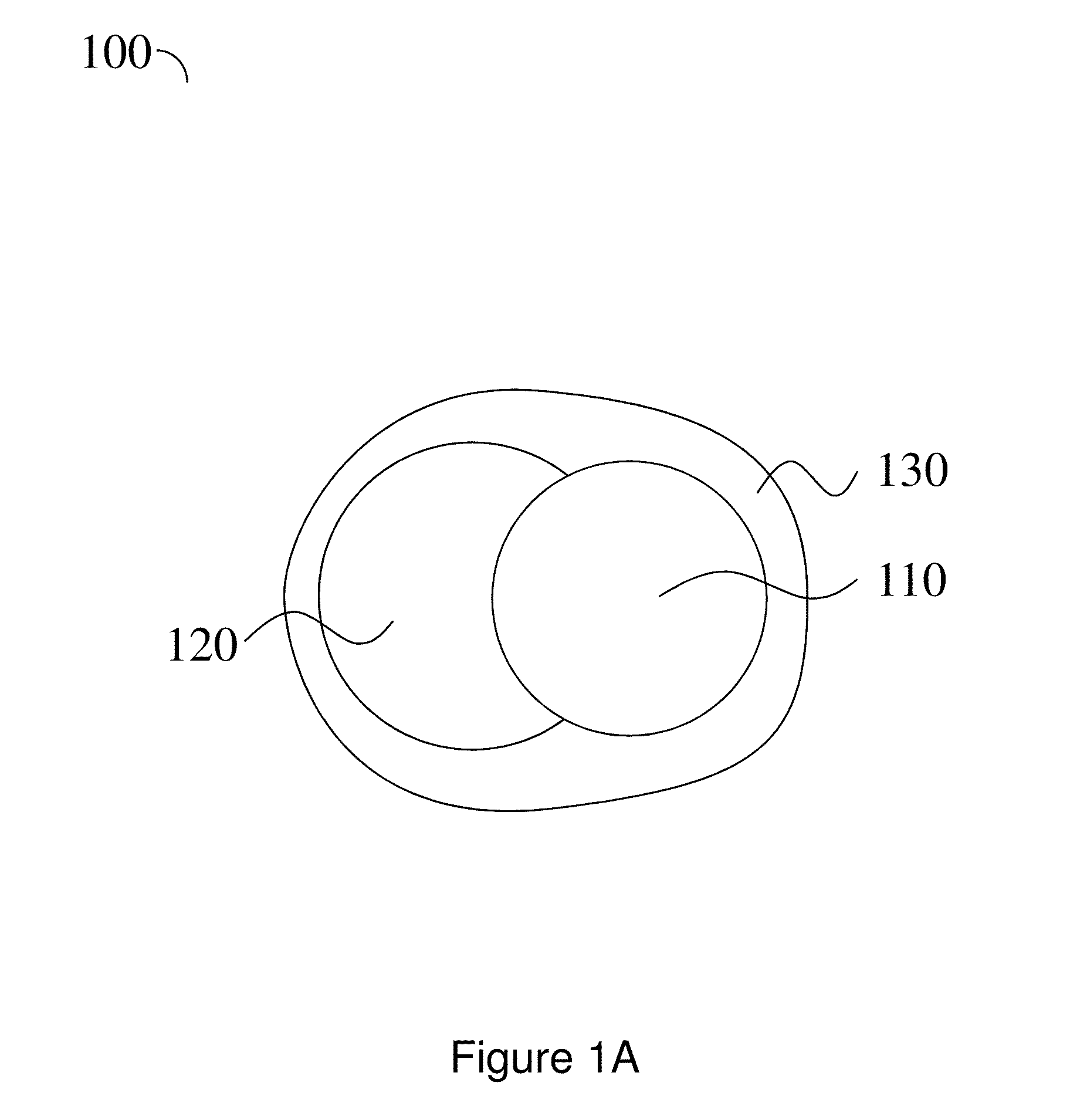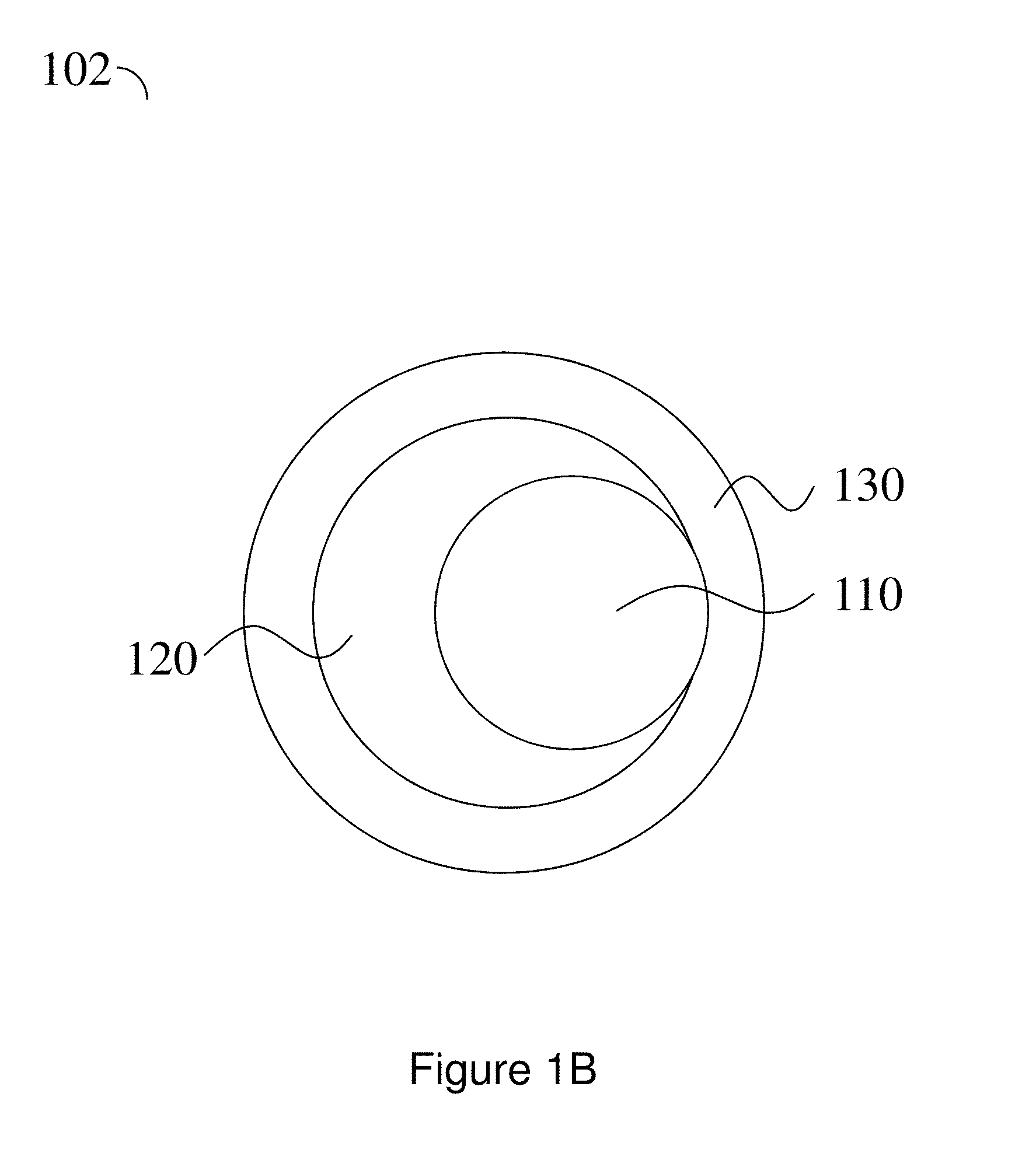Methods and compositions comprising particles for use in oil and/or gas wells
a technology for oil and gas wells and compositions, applied in the direction of fluid removal, chemistry apparatus and processes, borehole/well accessories, etc., can solve the problem of not always being able to achieve the optimal characteristics necessary
- Summary
- Abstract
- Description
- Claims
- Application Information
AI Technical Summary
Benefits of technology
Problems solved by technology
Method used
Image
Examples
example 1
[0093]34 wt % of a dispersion of 12 nm hydrophobized silica in d-limonene was mixed with 16.25 wt % ethoxylated alcohol surfactant, 16.25 wt % isopropyl alcohol, and 34 wt % deionized water to form a transparent microemulsion. Such silica dispersions are commercially available (e.g., from Nissan Chemical or Evonik). This microemulsion was subsequently dispersed to 0.2 wt % in 2% KCl aqueous solution to form a transparent dispersion.
example 2
[0094]This example describes a non-limiting experiment for determining displacement of residual aqueous treatment fluid by formation crude oil. A 25 cm long, 2.5 cm diameter capped glass chromatography column was packed with 77 grams of 100 mesh sand or a mixture of 70 / 140 mesh shale and 100 mesh sand or a mixture of 70 / 140 mesh shale and 100 mesh sand. The column was left open on one end and a PTFE insert containing a recessed bottom, 3.2 mm diameter outlet, and nipple was placed into the other end. Prior to placing the insert into the column, a 3 cm diameter filter paper disc (Whatman, #40) was pressed firmly into the recessed bottom of the insert to prevent leakage of 100 mesh sand. A 2 inch piece of vinyl tubing was placed onto the nipple of the insert and a clamp was fixed in place on the tubing prior to packing. The columns were gravity-packed by pouring approximately 25 grams of the diluted microemulsions (e.g., the microemulsions described in Example 1, and diluted with 2% K...
example 2-1
[0095]The ability of the 0.2 wt % microemulsion dispersion to promote flowback of residual aqueous phase from a sand-pack was measured using a standard sand-pack column experiment, as described in Example 2. Briefly, the amount of aqueous treatment fluid in the sand-pack displaced by a 5 cm hydrostatic head of crude oil is measured as a function of time. The amount of residual aqueous phase comprising the 0.2 wt % dispersion of the nanosilica-in-d-limonene microemulsion displaced by the crude oil after 60 minutes was 78%.
PUM
 Login to View More
Login to View More Abstract
Description
Claims
Application Information
 Login to View More
Login to View More - Generate Ideas
- Intellectual Property
- Life Sciences
- Materials
- Tech Scout
- Unparalleled Data Quality
- Higher Quality Content
- 60% Fewer Hallucinations
Browse by: Latest US Patents, China's latest patents, Technical Efficacy Thesaurus, Application Domain, Technology Topic, Popular Technical Reports.
© 2025 PatSnap. All rights reserved.Legal|Privacy policy|Modern Slavery Act Transparency Statement|Sitemap|About US| Contact US: help@patsnap.com



